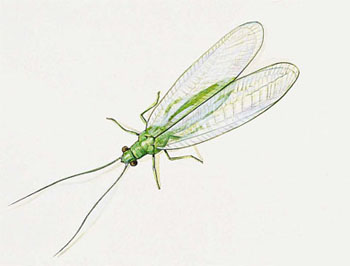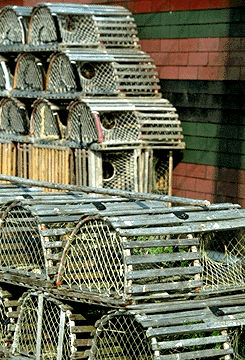Browse "Animals"
-
Article
Kinglet
The kinglet is a tiny, highly active, insectivorous songbird, olive grey with brightly coloured crown, sharp, slender bill and short, stubby tail.
"https://development.thecanadianencyclopedia.ca/images/tce_placeholder.jpg?v=e9dca980c9bdb3aa11e832e7ea94f5d9" // resources/views/front/categories/view.blade.php
https://development.thecanadianencyclopedia.ca/images/tce_placeholder.jpg?v=e9dca980c9bdb3aa11e832e7ea94f5d9
-
Article
Labrador Retriever
The Labrador retriever is one of four remaining Canadian dog breeds (see also Dogs in Canada). Its history begins at the turn of the 16th century on the island of Newfoundland. Here, its ancestors were retrievers of fish and game. The breed was further developed in England in the 19th century to assist in hunting. With a friendly temperament, the Labrador retriever is popular not only as a working dog but also as a family dog. In Canada, the Labrador has been the most popular dog for more than 25 years.
"https://d2ttikhf7xbzbs.cloudfront.net/LabradorRetriever/ChocolateLab.jpg" // resources/views/front/categories/view.blade.php
https://d2ttikhf7xbzbs.cloudfront.net/LabradorRetriever/ChocolateLab.jpg
-
Article
Lac La Croix Indigenous Pony
The Lac La Croix Indigenous pony, also known as the Lac La Croix Indian pony or the Ojibwa pony, is thought to be the only existing breed of horse developed by Indigenous people in Canada. It takes its name from Lac La Croix First Nation in northwestern Ontario, where it was last found in the wild. Known in the Ojibwa language as bebezhigooganzhii or mishdatim (meaning “one big toenail”), it is a small, semi-feral horse that once lived in the wild and worked as a service animal — but is also considered a spirit animal — for the Ojibwa people of northwestern Ontario and northern Minnesota. Today, this friendly, all-purpose breed is used in equine therapy, Indigenous heritage programs and tourism. Conservation efforts in Canada and the United States strive to protect the breed, which is critically endangered.
"https://d2ttikhf7xbzbs.cloudfront.net/media/media/1ef4a37a-9a7a-430d-bb76-270783327204.jpg" // resources/views/front/categories/view.blade.php
https://d2ttikhf7xbzbs.cloudfront.net/media/media/1ef4a37a-9a7a-430d-bb76-270783327204.jpg
-
Article
Lacewing
Lacewing is the common name for small, fragile insects of the 2 most common families (Chrysopidae, green lacewings; Hemerobiidae, brown lacewings) of order Neuroptera.
"https://d2ttikhf7xbzbs.cloudfront.net/media/media/e8007af8-8d70-4067-8d62-17a758d4bdc9.jpg" // resources/views/front/categories/view.blade.php
https://d2ttikhf7xbzbs.cloudfront.net/media/media/e8007af8-8d70-4067-8d62-17a758d4bdc9.jpg
-
Article
Lagomorpha
Lagomorpha, order of mammals containing 2 families: the rabbits and hares (Leporidae), and the small, lesser-known pikas (Ochotonidae).
"https://d2ttikhf7xbzbs.cloudfront.net/media/media/8e71f9da-22dd-4449-bd01-06be2e3f6ddf.jpg" // resources/views/front/categories/view.blade.php
https://d2ttikhf7xbzbs.cloudfront.net/media/media/8e71f9da-22dd-4449-bd01-06be2e3f6ddf.jpg
-
Article
Lamprey
Lamprey, group of primitive vertebrates which, together with hagfish and various extinct forms comprise the fish class Agnatha.
"https://d2ttikhf7xbzbs.cloudfront.net/media/media/31c5a075-649d-4cef-bc38-72753702d9cd.jpg" // resources/views/front/categories/view.blade.php
https://d2ttikhf7xbzbs.cloudfront.net/media/media/31c5a075-649d-4cef-bc38-72753702d9cd.jpg
-
"https://development.thecanadianencyclopedia.ca/images/tce_placeholder.jpg?v=e9dca980c9bdb3aa11e832e7ea94f5d9" // resources/views/front/categories/view.blade.php
https://development.thecanadianencyclopedia.ca/images/tce_placeholder.jpg?v=e9dca980c9bdb3aa11e832e7ea94f5d9
-
Article
Leech
Leech (class Hirudinea) is a segmented annelid worm with 34 segments, many external rings and no setae (bristles).
"https://d2ttikhf7xbzbs.cloudfront.net/media/media/e1a3571d-42b5-49b0-97fb-d6e0d037c1f9.jpg" // resources/views/front/categories/view.blade.php
https://d2ttikhf7xbzbs.cloudfront.net/media/media/e1a3571d-42b5-49b0-97fb-d6e0d037c1f9.jpg
-
Article
Lobster
Lobster, term applied to 4 groups of decapod ("10-footed") crustaceans: the coral, slipper, spiny and clawed lobsters.
"https://d2ttikhf7xbzbs.cloudfront.net/media/media/128a9835-6345-4713-9a60-2a8abb732614.jpg" // resources/views/front/categories/view.blade.php
https://d2ttikhf7xbzbs.cloudfront.net/media/media/128a9835-6345-4713-9a60-2a8abb732614.jpg
-
Article
Loon
Loon (family Gaviidae) is a common name for a distinctive group of 5 large, swimming birds, all confined to the Northern Hemisphere and all occurring in North America.
"https://d2ttikhf7xbzbs.cloudfront.net/media/media/11b636e6-b2ad-4c58-bbfc-b7291fc0109f.jpg" // resources/views/front/categories/view.blade.php
https://d2ttikhf7xbzbs.cloudfront.net/media/media/11b636e6-b2ad-4c58-bbfc-b7291fc0109f.jpg
-
Article
Louse
Louse is the common term broadly used for certain insect pests of mammals, birds, plants (aphids), books (book lice), etc, and for crustaceans (sea lice), living commensally with aquatic mammals and fish.
"https://development.thecanadianencyclopedia.ca/images/tce_placeholder.jpg?v=e9dca980c9bdb3aa11e832e7ea94f5d9" // resources/views/front/categories/view.blade.php
https://development.thecanadianencyclopedia.ca/images/tce_placeholder.jpg?v=e9dca980c9bdb3aa11e832e7ea94f5d9
-
Article
Lynx
The lynx is a medium-sized, carnivorous mammal of family Felidae. Canada lynx (Lynx canadensis) is distinguished from the North American bobcat by its tufted ears, large feet, long legs and lack of a white patch below the tail tip.
"https://d2ttikhf7xbzbs.cloudfront.net/media/media/afc695e4-39e9-44d1-976b-3b6bbe48ca04.jpg" // resources/views/front/categories/view.blade.php
https://d2ttikhf7xbzbs.cloudfront.net/media/media/afc695e4-39e9-44d1-976b-3b6bbe48ca04.jpg
-
Article
Mackerel
Mackerel (Scombridae), family of pelagic (open-sea) fishes of class Actinopterygii. The family also includes tunas, albacores, skipjacks, bonitos and ceras.
"https://d2ttikhf7xbzbs.cloudfront.net/media/media/7d800bc2-4666-4c97-a3e8-43700067d9aa.jpg" // resources/views/front/categories/view.blade.php
https://d2ttikhf7xbzbs.cloudfront.net/media/media/7d800bc2-4666-4c97-a3e8-43700067d9aa.jpg
-
Article
Magpie
Magpie is a common name for birds of several genera in the crow family. Some 20 species are known worldwide; however, only the black-billed magpie (Pica hudsonia) is found in Canada.
"https://d2ttikhf7xbzbs.cloudfront.net/media/media/4392aa76-f779-4337-bcab-bbce062236fe.jpg" // resources/views/front/categories/view.blade.php
https://d2ttikhf7xbzbs.cloudfront.net/media/media/4392aa76-f779-4337-bcab-bbce062236fe.jpg
-
Article
Mammal
The word mammal is derived from the milk-producing mammary glands that are unique to the class Mammalia.
"https://d2ttikhf7xbzbs.cloudfront.net/media/media/fec19146-70d7-459c-9ec5-dc85f4666163.jpg" // resources/views/front/categories/view.blade.php
https://d2ttikhf7xbzbs.cloudfront.net/media/media/fec19146-70d7-459c-9ec5-dc85f4666163.jpg
